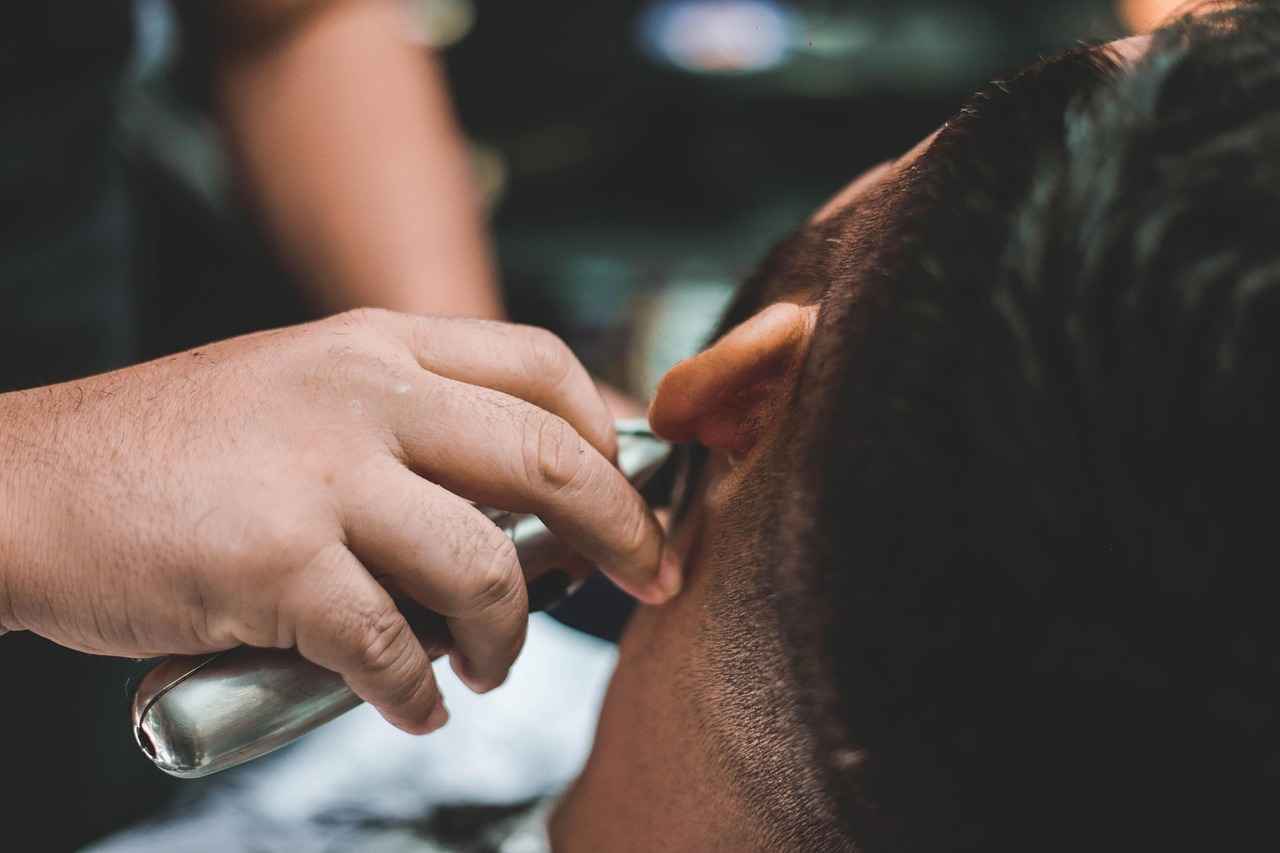This article delves into the effectiveness of hair transplant clinics in addressing female hair loss. We will explore various techniques, benefits, and essential considerations for women seeking solutions to this prevalent issue.
Understanding Female Hair Loss
Female hair loss can stem from a variety of factors, including genetics, hormonal changes, and lifestyle choices. Recognizing these causes is crucial for identifying the most effective treatment options available.
Common Causes of Hair Loss in Women
- Genetic Factors: Genetic predisposition can significantly influence hair loss in women. Conditions such as androgenetic alopecia often lead to thinning hair and bald spots.
- Hormonal Changes: Fluctuations in hormones, particularly during pregnancy, menopause, and thyroid disorders, can trigger hair loss.
- Medical Conditions: Certain medical issues, like polycystic ovary syndrome (PCOS) and autoimmune diseases, may contribute to hair loss.
- Lifestyle Factors: Choices related to diet, stress, and hair care practices can greatly affect hair health.
What is a Hair Transplant?
A hair transplant is a surgical procedure that relocates hair follicles from one area of the body to another. This method is particularly effective for women experiencing significant hair loss.
Types of Hair Transplant Techniques
There are two primary hair transplant techniques: Follicular Unit Transplantation (FUT) and Follicular Unit Extraction (FUE). Each technique has its unique advantages and is suitable for different patient needs.
Benefits of Hair Transplants for Women
Hair transplants can offer a permanent solution to hair loss, restoring not only hair but also confidence and enhancing overall appearance.
Consultation Process at Hair Transplant Clinics
The consultation process is crucial for assessing individual needs and determining the best treatment plan, which can lead to successful outcomes in hair restoration.
Potential Risks and Considerations
While generally safe, hair transplants come with potential risks and considerations. Common side effects may include swelling, bruising, and temporary shedding of transplanted hair.
Conclusion: Is a Hair Transplant Right for You?
Deciding to undergo a hair transplant is a personal choice that should be made after thorough research and consultation. Evaluating the benefits and risks will aid in making an informed decision.

Understanding Female Hair Loss
Female hair loss is a complex issue that affects many women at different stages of life. It can be attributed to a variety of factors, including genetics, hormonal changes, and lifestyle choices. Gaining a comprehensive understanding of these causes is essential for identifying the most effective treatment options available.
Common Causes of Hair Loss in Women
- Genetic Factors: A significant contributor to female hair loss is genetic predisposition. Conditions such as androgenetic alopecia are common, leading to thinning hair and bald patches. Women with a family history of hair loss may be more susceptible.
- Hormonal Changes: Hormonal fluctuations due to events like pregnancy, menopause, or thyroid disorders can trigger hair loss. These changes can disrupt the hair growth cycle, leading to noticeable thinning.
- Medical Conditions: Certain health issues, including polycystic ovary syndrome (PCOS) and autoimmune diseases, can also result in hair loss. Identifying these conditions is crucial for effective treatment.
- Lifestyle Factors: Lifestyle choices such as poor diet, high stress levels, and inadequate hair care can significantly affect hair health. Implementing healthier habits can help mitigate hair loss.
Importance of Understanding Causes
Recognizing the underlying causes of hair loss is vital for women seeking solutions. By understanding these factors, women can make informed decisions about their treatment options, whether it be through medical intervention, lifestyle changes, or cosmetic solutions.
In conclusion, female hair loss is a multifaceted issue that requires careful consideration of various contributing factors. By acknowledging the role of genetics, hormonal changes, medical conditions, and lifestyle choices, women can better navigate their options for effective treatment and restoration of hair health.

Common Causes of Hair Loss in Women
Hair loss in women is a multifaceted issue that can stem from a variety of factors. Understanding these causes is crucial for effective treatment and prevention. Below, we explore the most common contributors to female hair loss.
- Hormonal Imbalances: Hormonal changes, particularly during significant life stages such as pregnancy, menopause, and conditions like polycystic ovary syndrome (PCOS), can lead to hair thinning. Fluctuations in estrogen and progesterone levels directly affect hair growth cycles.
- Genetic Factors: A hereditary condition known as androgenetic alopecia is prevalent among women. This genetic predisposition can cause progressive thinning of hair and bald spots, necessitating specialized treatment approaches.
- Medical Conditions: Various medical issues, including autoimmune diseases like alopecia areata and thyroid disorders, can trigger hair loss. Recognizing these underlying conditions is vital for effective management and treatment.
- Stress: High levels of stress can lead to a type of hair loss known as telogen effluvium, where hair follicles enter a resting phase and shed prematurely. Managing stress through lifestyle changes is essential for hair health.
- Lifestyle Choices: Poor nutrition, lack of essential vitamins, and harsh hair care practices can adversely affect hair health. A balanced diet rich in vitamins and minerals, along with gentle hair care, can help mitigate hair loss.
Identifying the underlying cause of hair loss is essential for developing an effective treatment plan. Women experiencing hair loss should consult healthcare professionals to explore their options.
Genetic Factors
play a crucial role in the landscape of female hair loss, influencing both the onset and progression of various conditions. Among these, androgenetic alopecia stands out as a primary concern for many women. This hereditary condition is characterized by a gradual thinning of hair, often leading to noticeable bald spots. Understanding the genetic underpinnings of this condition is essential for women seeking effective treatment options.
Research indicates that genetic predisposition can significantly increase the likelihood of experiencing hair loss. Women with a family history of hair loss are often more susceptible to developing similar issues. This genetic link suggests that certain genes may affect hair follicle sensitivity to hormones, particularly androgens, which can lead to hair thinning and loss over time.
In addition to androgenetic alopecia, other genetic factors may contribute to hair loss in women. Conditions such as telogen effluvium and alopecia areata can also have hereditary components. Telogen effluvium, for instance, is often triggered by stress or hormonal changes but can be exacerbated by genetic factors, making some women more vulnerable than others.
Moreover, identifying genetic markers associated with hair loss can pave the way for personalized treatment approaches. By understanding an individual’s genetic background, healthcare providers can recommend targeted therapies that may be more effective based on the patient’s unique genetic makeup.
In conclusion, genetic factors are a significant contributor to female hair loss, particularly in conditions like androgenetic alopecia. Recognizing the role of genetics not only helps in understanding the condition but also guides women toward appropriate treatment options. For those affected, consulting with a specialist who can assess genetic predispositions may provide valuable insights and lead to more effective management strategies.
Hormonal Changes
play a significant role in female hair loss, with various stages of life contributing to these fluctuations. Understanding the impact of hormones on hair health is essential for women experiencing hair thinning or loss.
During pregnancy, women go through a surge in hormones such as estrogen and progesterone. While these hormones can promote hair growth, the subsequent drop in hormone levels after childbirth can lead to significant hair shedding, commonly known as postpartum hair loss. This condition typically resolves itself within a few months, but it can be distressing for new mothers.
Another critical phase is menopause, where a decrease in estrogen levels can result in hair thinning and loss. This transition can be challenging, as women may also experience other symptoms such as hot flashes and mood swings. Hormonal replacement therapy (HRT) and other treatments may help mitigate hair loss during this time.
Additionally, thyroid issues can significantly affect hair health. Both hyperthyroidism and hypothyroidism can lead to hair loss, as the thyroid hormones play a vital role in regulating the hair growth cycle. Women experiencing unexplained hair loss should consult a healthcare provider to evaluate their thyroid function.
- Postpartum Hair Loss: Temporary shedding after childbirth.
- Menopausal Hair Thinning: Hair loss due to decreased estrogen levels.
- Thyroid-Related Hair Loss: Impact of thyroid dysfunction on hair health.
Understanding these hormonal changes allows women to tailor appropriate interventions, whether through lifestyle adjustments, medical treatments, or consultation with hair loss specialists. By addressing the underlying hormonal issues, women can take proactive steps toward restoring their hair health.
In conclusion, recognizing the impact of hormonal fluctuations is crucial for women facing hair loss. With the right knowledge and support, effective strategies can be implemented to manage and mitigate these challenges.
Medical Conditions
Female hair loss is a multifaceted issue that can stem from various . Among the most significant contributors are polycystic ovary syndrome (PCOS) and autoimmune diseases. Understanding these conditions is essential for effective management and treatment of hair loss.
Polycystic Ovary Syndrome (PCOS)
PCOS is a hormonal disorder affecting women of reproductive age. It is characterized by irregular menstrual cycles, excessive hair growth, and often, thinning hair. The hormonal imbalances associated with PCOS can lead to increased levels of androgens, which are male hormones that can contribute to hair loss. Women experiencing symptoms of PCOS should consult a healthcare provider for diagnosis and management options.
Autoimmune Diseases
Autoimmune diseases, such as alopecia areata, can also lead to significant hair loss. In these conditions, the immune system mistakenly attacks hair follicles, resulting in patchy or complete hair loss. Early recognition and treatment are crucial for managing these conditions effectively. Treatment may include topical medications, corticosteroids, or other therapies aimed at suppressing the immune response.
Other Medical Conditions
In addition to PCOS and autoimmune diseases, other medical issues such as thyroid disorders, iron deficiency anemia, and scalp infections can contribute to hair loss in women. Each of these conditions requires a tailored approach to treatment, often involving a combination of medical and lifestyle interventions.
Conclusion
Recognizing and addressing these underlying medical conditions is vital for effective hair loss management. Women experiencing hair loss should seek professional guidance to explore potential causes and appropriate treatment options.
Lifestyle Factors
play a crucial role in the overall health of your hair. Many women experience hair loss due to a combination of various elements, including diet, stress, and hair care practices. By making informed decisions and adopting healthier habits, it is possible to improve hair health and reduce the risk of further loss.
First and foremost, diet is a fundamental aspect of hair health. Consuming a balanced diet rich in vitamins and minerals can significantly enhance hair growth. Nutrients such as biotin, zinc, and omega-3 fatty acids are particularly beneficial. Foods like salmon, nuts, and leafy greens should be included in your meals to promote stronger hair follicles.
Stress management is another critical factor. Chronic stress can lead to hair shedding and even conditions like telogen effluvium, where hair falls out in patches. Techniques such as yoga, meditation, and regular exercise can help mitigate stress levels, contributing to healthier hair. Finding time for relaxation and self-care is essential in maintaining not only mental health but also hair vitality.
Additionally, hair care practices should not be overlooked. Using harsh chemicals, excessive heat styling, and tight hairstyles can cause damage and lead to hair loss. It is advisable to adopt gentler hair care routines, such as using sulfate-free shampoos, minimizing heat exposure, and allowing hair to air dry whenever possible. Regular trims can also help prevent split ends and breakage.
In conclusion, understanding and improving your lifestyle choices can have a profound impact on hair health. By focusing on a nutritious diet, managing stress effectively, and practicing good hair care, women can take proactive steps to prevent further hair loss and promote overall hair wellness.

What is a Hair Transplant?
A hair transplant is a surgical procedure designed to address hair loss by relocating hair follicles from a donor site, typically the back of the scalp, to areas experiencing thinning or baldness. This innovative technique has gained popularity among women facing significant hair loss, offering a potential solution to restore their confidence and appearance.
Hair loss in women can be distressing and is often linked to various factors such as genetics, hormonal changes, and certain medical conditions. Understanding these underlying causes is essential for determining the most effective treatment options available.
There are two primary techniques used in hair transplants: Follicular Unit Transplantation (FUT) and Follicular Unit Extraction (FUE). Each method has its unique advantages and is suited to different types of hair loss. FUT involves removing a strip of scalp and dissecting it into individual follicular units, while FUE extracts individual follicles directly from the scalp, minimizing scarring.
The benefits of hair transplants for women extend beyond mere aesthetics. This procedure can provide a permanent solution to hair loss, significantly enhancing self-esteem and overall quality of life. Patients often report feeling more youthful and vibrant post-procedure, which can positively impact their social interactions and personal relationships.
However, it is crucial for potential candidates to undergo a thorough consultation process at hair transplant clinics. This process includes an initial assessment where specialists evaluate hair loss patterns and medical history. Setting realistic expectations is vital, as understanding the potential results and recovery times can greatly influence the decision-making process.
While hair transplants are generally safe, there are potential risks and side effects such as swelling, bruising, and temporary shedding of transplanted hair. Additionally, the cost of hair transplants can vary significantly based on the chosen technique and the clinic’s reputation, making financial planning essential.
In conclusion, a hair transplant can be a suitable option for women experiencing hair loss, provided they have conducted thorough research and consulted with qualified professionals. Weighing the benefits and risks will help in making an informed decision about this transformative procedure.
Types of Hair Transplant Techniques
When it comes to addressing hair loss, particularly for women, understanding the different hair transplant techniques is crucial. Among the most prominent methods are Follicular Unit Transplantation (FUT) and Follicular Unit Extraction (FUE). Each technique offers unique advantages and is suitable for different types of patients, depending on their individual needs and conditions.
Follicular Unit Transplantation (FUT) is a method that involves removing a strip of skin from the donor area, usually the back of the head, where hair is denser. The hair follicles are then meticulously dissected from this strip and transplanted into the balding areas. This technique is particularly effective for patients who require a larger number of grafts, as it can yield a significant amount of hair in a single session. Additionally, because the follicles are taken from a strip, the potential for scarring is minimized if performed by an experienced surgeon.
On the other hand, Follicular Unit Extraction (FUE) is a more modern technique that involves extracting individual hair follicles directly from the scalp using a specialized tool. This method is less invasive than FUT and leaves minimal scarring, making it a popular choice among patients who prefer shorter hairstyles. FUE is ideal for those who are looking for a less painful recovery and want to avoid the linear scar associated with FUT.
Both techniques have their own benefits and considerations. For instance, while FUT can provide a higher yield of hair in one session, FUE allows for a quicker recovery time and less noticeable scars. Ultimately, the choice between FUT and FUE should be based on a thorough consultation with a qualified hair restoration specialist, who can assess the patient’s specific condition, lifestyle, and goals.
In conclusion, understanding the different types of hair transplant techniques is essential for anyone considering a hair restoration procedure. Both FUT and FUE have their unique advantages, and the best choice will depend on individual circumstances. Consulting with a professional can help ensure that patients receive the most suitable treatment for their hair loss needs.
Benefits of Hair Transplants for Women
Hair loss can be a distressing experience for women, affecting self-esteem and overall well-being. Fortunately, hair transplants offer a viable and permanent solution to this common issue. Understanding the numerous benefits of this procedure can empower women to take charge of their hair loss journey.
- Permanent Solution: Unlike temporary treatments, hair transplants provide a long-lasting solution. Once the transplanted hair follicles establish themselves, they continue to grow naturally, allowing women to enjoy a full head of hair for years to come.
- Natural Appearance: Modern techniques, such as Follicular Unit Extraction (FUE), ensure that the results look natural. The hair is transplanted in a way that mimics natural growth patterns, making it difficult for others to detect that a procedure has been performed.
- Boosted Confidence: Restoring hair can significantly enhance a woman’s confidence. Many women report feeling more attractive and self-assured after undergoing a hair transplant, positively impacting their personal and professional lives.
- Minimal Maintenance: Once the hair has been transplanted and has grown in, it requires no special treatment compared to natural hair. Women can wash, style, and treat their hair without restrictions, just as they did before hair loss.
- Cost-Effective in the Long Run: While the initial investment in a hair transplant may seem significant, it can be more cost-effective over time compared to ongoing treatments like topical solutions or wigs, which often require continuous spending.
In conclusion, hair transplants represent a transformative option for women experiencing hair loss. By providing a permanent, natural-looking solution that boosts confidence and requires minimal maintenance, this procedure can significantly improve the quality of life for many women. Understanding these benefits can help women make informed decisions about their hair restoration options.

Consultation Process at Hair Transplant Clinics
The consultation process at hair transplant clinics is an essential step in addressing hair loss, particularly for women. This phase not only helps in understanding the specific needs of each individual but also plays a pivotal role in formulating a tailored treatment plan. A comprehensive evaluation during this process can significantly enhance the likelihood of successful outcomes in hair restoration.
Initially, the consultation begins with a detailed initial assessment. Specialists will examine the patient’s hair loss patterns and discuss their medical history, including any underlying health conditions that may contribute to hair loss. This assessment is crucial as it allows the clinician to gather pertinent information that will guide the treatment strategy.
Moreover, the consultation process involves setting realistic expectations for the patient. It is vital for women considering hair transplants to understand the potential results, recovery times, and limitations of the procedure. This transparency helps in managing expectations and fosters a trusting relationship between the patient and the clinician.
During the evaluation, patients may also learn about the various treatment options available. This includes discussing the differences between techniques such as Follicular Unit Transplantation (FUT) and Follicular Unit Extraction (FUE), along with their respective benefits and drawbacks. Understanding these options empowers patients to make informed decisions about their treatment journey.
In conclusion, the consultation process is a critical component of hair restoration at clinics. By thoroughly assessing individual needs and establishing a clear treatment plan, patients can embark on their hair restoration journey with confidence. Ultimately, a well-conducted consultation can lead to effective and satisfying results for women experiencing hair loss.
Initial Assessment
is a critical step in the hair restoration journey, particularly for women experiencing hair loss. During this phase, specialists conduct a thorough evaluation to understand the unique characteristics of each patient’s condition.
The assessment begins with a detailed analysis of hair loss patterns. This involves examining the distribution and extent of thinning or balding areas on the scalp. Specialists look for specific signs, such as the Norwood scale for male-pattern baldness or the Ludwig scale for female-pattern baldness, to categorize the type and severity of hair loss.
In addition to visual assessments, a comprehensive discussion about the patient’s medical history is essential. This includes exploring family history of hair loss, previous treatments, and any underlying health conditions that may contribute to hair thinning. Conditions such as polycystic ovary syndrome (PCOS) or thyroid disorders can significantly impact hair health, and understanding these factors is vital for tailoring a suitable treatment plan.
Furthermore, specialists may inquire about lifestyle factors, including diet, stress levels, and hair care practices. These elements can play a significant role in hair health and may influence the effectiveness of potential treatments.
By gathering this comprehensive information, specialists can create a personalized treatment strategy that addresses the specific needs of each patient. This tailored approach not only enhances the likelihood of successful outcomes but also ensures that patients feel informed and empowered throughout their hair restoration journey.
In conclusion, the initial assessment is a foundational step that sets the stage for effective hair loss management. It emphasizes the importance of understanding individual circumstances and developing a customized plan that aligns with the patient’s goals and health profile.
Setting Realistic Expectations
is crucial for women considering hair transplants. The journey towards hair restoration can be both exciting and daunting, and understanding what to expect is essential for making informed decisions.
When contemplating a hair transplant, it’s important to realize that results may vary significantly from person to person. Factors such as individual hair type, the extent of hair loss, and the chosen technique can all influence the final outcome. Women should engage in detailed discussions with their hair transplant specialists to gain a clear understanding of what results they can realistically achieve.
Recovery time is another critical aspect to consider. While some women may experience immediate results, it typically takes several months for the full effects of the transplant to be visible. During this period, it is common to experience some hair shedding before new growth begins. Being aware of this can help manage expectations and reduce anxiety during the recovery phase.
Moreover, the consultation process plays a vital role in setting these expectations. During the initial assessment, specialists evaluate the patient’s hair loss pattern and discuss potential outcomes. This personalized approach ensures that women receive tailored advice based on their unique circumstances.
In addition to understanding the physical aspects of hair transplants, women should also consider the emotional impact of the procedure. While hair restoration can significantly boost confidence, it is essential to approach the process with a balanced mindset. Engaging in support groups or seeking advice from others who have undergone similar procedures can provide valuable insights and reassurance.
In conclusion, setting realistic expectations regarding results and recovery times is vital for women considering hair transplants. By fostering open communication with specialists and understanding the journey ahead, patients can make informed decisions that lead to satisfying outcomes.

Potential Risks and Considerations
While hair transplants are generally regarded as safe procedures, it is crucial for women to be aware of the potential risks and considerations involved. Understanding these factors can help individuals make informed decisions regarding their hair restoration journey.
| Risk Factor | Description |
|---|---|
| Infection | As with any surgical procedure, there is a risk of infection at the donor or recipient site. Proper aftercare is essential to minimize this risk. |
| Scarring | Some techniques may leave visible scars, particularly with Follicular Unit Transplantation (FUT). Discussing scarring with the surgeon beforehand can help set expectations. |
| Unnatural Appearance | If not performed correctly, hair transplants can result in an unnatural appearance. Choosing a qualified and experienced surgeon is vital. |
| Temporary Shedding | It is common for transplanted hair to shed temporarily before new growth begins. Understanding this phase can alleviate concerns during recovery. |
In addition to these risks, cost considerations play a significant role in the decision-making process. Hair transplant prices can vary widely depending on the clinic’s reputation, the technique used, and the extent of hair loss. It is advisable to conduct thorough research and consult with multiple clinics to understand the financial implications.
Moreover, women should consider their long-term goals for hair restoration. Setting realistic expectations regarding the results and recovery time is essential. A detailed consultation with a qualified specialist can provide valuable insights into what to expect, helping to align personal goals with achievable outcomes.
Ultimately, being informed about the potential risks and considerations associated with hair transplants can empower women to make confident choices regarding their hair restoration options.
Possible Side Effects
When considering a hair transplant, it is essential to be aware of the that may arise during the recovery process. Understanding these effects can significantly aid in preparing for a smoother healing journey.
- Swelling: Post-operative swelling is common, particularly around the forehead and eyes. This swelling typically subsides within a few days, but applying cold compresses can help alleviate discomfort.
- Bruising: Some patients may experience bruising at the donor site or the transplant area. This is usually temporary and can be managed with ice packs and over-the-counter pain relief.
- Temporary Shedding: It’s normal for transplanted hair to shed within the first few weeks after the procedure. This phase, known as “shock loss,” is a part of the natural hair growth cycle and does not indicate failure of the transplant.
- Itching: Itching around the transplant sites is common as the scalp heals. Patients are advised to avoid scratching to prevent any potential damage to the newly transplanted follicles.
- Infection: Although rare, there is a risk of infection at the donor or recipient site. Following post-operative care instructions can minimize this risk significantly.
- Scarring: Depending on the technique used (FUT or FUE), some scarring may occur. However, skilled surgeons aim to minimize this, and the scars are often discreet.
Being informed about these side effects allows patients to have realistic expectations and prepares them for the recovery phase following their hair transplant. Consulting with experienced professionals can further clarify any concerns and provide tailored advice for individual cases.
Cost Considerations
The financial aspect of hair transplants is a crucial factor that potential patients must consider before proceeding with the procedure. The cost can vary widely based on several factors, including the technique used, the clinic’s reputation, and the geographic location. Understanding these elements can help individuals make informed decisions regarding their hair restoration journey.
Typically, hair transplant procedures can range from $4,000 to $15,000. The two most common techniques, Follicular Unit Transplantation (FUT) and Follicular Unit Extraction (FUE), have different pricing structures. FUT may be less expensive than FUE due to its less labor-intensive nature, but both methods offer unique benefits that can influence overall costs.
| Technique | Average Cost | Notes |
|---|---|---|
| Follicular Unit Transplantation (FUT) | $4,000 – $10,000 | More cost-effective, involves a strip of scalp removal. |
| Follicular Unit Extraction (FUE) | $6,000 – $15,000 | Less invasive, individual follicle extraction. |
Additionally, the clinic’s reputation plays a significant role in determining the cost. Well-established clinics with a history of successful outcomes may charge a premium for their services. It’s essential to conduct thorough research and read patient reviews to gauge the clinic’s credibility.
Furthermore, potential patients should consider the long-term value of the procedure. A hair transplant can offer a permanent solution to hair loss, potentially saving money on ongoing treatments and products. Therefore, while the initial investment may seem high, the benefits can justify the cost over time.
In conclusion, understanding the financial implications of hair transplants is essential for effective budgeting and planning. By evaluating the techniques available, clinic reputations, and long-term benefits, individuals can make an informed decision that aligns with their needs and financial situation.

Conclusion: Is a Hair Transplant Right for You?
Deciding to undergo a hair transplant is a significant personal choice that requires careful consideration and thorough research. It is essential to understand that this decision is not merely about aesthetics but involves various factors that can impact both physical appearance and emotional well-being. Therefore, consulting with qualified professionals is crucial in this process.
Before making a decision, individuals should evaluate both the benefits and risks associated with hair transplants. On one hand, a successful hair transplant can lead to a permanent solution for hair loss, significantly boosting one’s confidence and overall appearance. Many women experience renewed self-esteem after undergoing the procedure, as it often restores a more youthful look.
On the other hand, potential risks must be considered. Hair transplants, while generally safe, can have side effects such as swelling, bruising, and the temporary shedding of transplanted hair. Understanding these risks can help individuals prepare for the recovery process and set realistic expectations regarding the outcomes.
Furthermore, individuals should engage in thorough research regarding different hair transplant techniques, such as Follicular Unit Transplantation (FUT) and Follicular Unit Extraction (FUE). Each method has its unique advantages and may be more suitable for certain individuals based on their specific hair loss patterns and personal preferences.
Ultimately, making an informed decision about a hair transplant involves evaluating personal goals, understanding the implications of the procedure, and consulting with experienced professionals who can provide tailored advice. Taking these steps will empower individuals to make choices that align with their personal needs and expectations, leading to a more satisfying outcome.
Frequently Asked Questions
- What causes hair loss in women?
Hair loss in women can stem from various factors such as genetics, hormonal changes, stress, and certain medical conditions. Understanding these causes is crucial for finding the right treatment.
- How does a hair transplant work?
A hair transplant involves moving hair follicles from a donor site, usually the back of the head, to areas experiencing thinning or baldness. This surgical procedure aims to restore a natural-looking hairline.
- What are the different types of hair transplant techniques?
The two main techniques are Follicular Unit Transplantation (FUT) and Follicular Unit Extraction (FUE). FUT involves removing a strip of scalp, while FUE extracts individual follicles, offering a less invasive option.
- What should I expect during the consultation process?
During your consultation, a specialist will assess your hair loss pattern, discuss your medical history, and help set realistic expectations for the results and recovery process.
- Are there any risks associated with hair transplants?
While generally safe, hair transplants can have side effects like swelling, bruising, and temporary hair shedding. It’s essential to discuss these risks with your doctor before proceeding.
- How much do hair transplants cost?
The cost of hair transplants varies widely based on the technique used and the clinic’s reputation. It’s important to budget accordingly and consult with clinics for detailed pricing.












